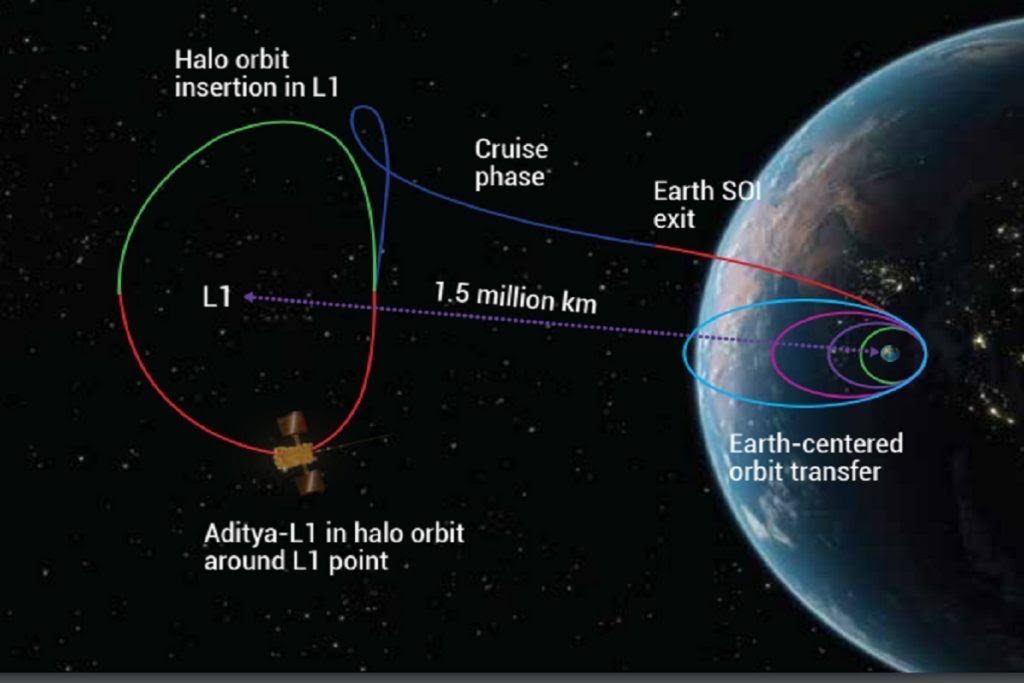After a journey of 127 days, India’s first observatory-class Sun mission Aditya-L1 is all set reach its final destination on Saturday. The Indian Space Research Organisation (ISRO) is scheduled to execute the final manoeuvre to place Aditya L1 Sun Mission in a halo orbit around the Lagrange Point L1 of the Sun-Earth system.
If successful, the Aditya L1 spacecraft will be able to continuously view the Sun without any obstructions from the Lagrange Point L1.
The observatory class Sun mission is carrying seven payloads – Visible Emission Line Coronagraph(VELC), Solar Ultraviolet Imaging Telescope (SUIT), Solar Low Energy X-ray Spectrometer (SoLEXS), High Energy L1 Orbiting X-ray Spectrometer(HEL1OS), Aditya Solar wind Particle Experiment(ASPEX), Plasma Analyser Package For Aditya (PAPA), and Advanced Tri-axial High-Resolution Digital Magnetometers – to study the only star in our solar system.
The staggering 1.5 million KM journey of Aditya L1 was not an easy ride and involved a lot of risks.
According to ISRO, the spacecraft was initially placed in a low-earth orbit before being launched towards the Lagrange Point L1.
Once it reaches the low earth orbit, the orbit was made more elliptical, and on-board propulsion launched the spacecraft towards Lagrange Point L1.
The manoeuvre will be attempted at around 4 pm today and it is expected to bind the Aditya-L1 to a halo orbit around L1.
This manoeuvre is crucial for the mission’s success as, according to the ISRO, it will continue its journey towards the sun and will be destroyed eventually.
It is to be noted that the Aditya L1 mission is not intended to land on Sun for it is currently not possible but will be placed in a Halo orbit around Lagrange Point L1.
The Lagrange point L1 is basically a location in space where the gravitational forces of the Earth and the Sun balance out. This allows a third smaller object such as a spacecraft to orbit in a stable position with the two larger bodies.
From this point, ISRO said, Aditya L1 would be able to observe the Sun without any eclipses and obstructions. The placement around the L1 point will provide the spacecraft with a greater advantage in observing solar activities in real time.












